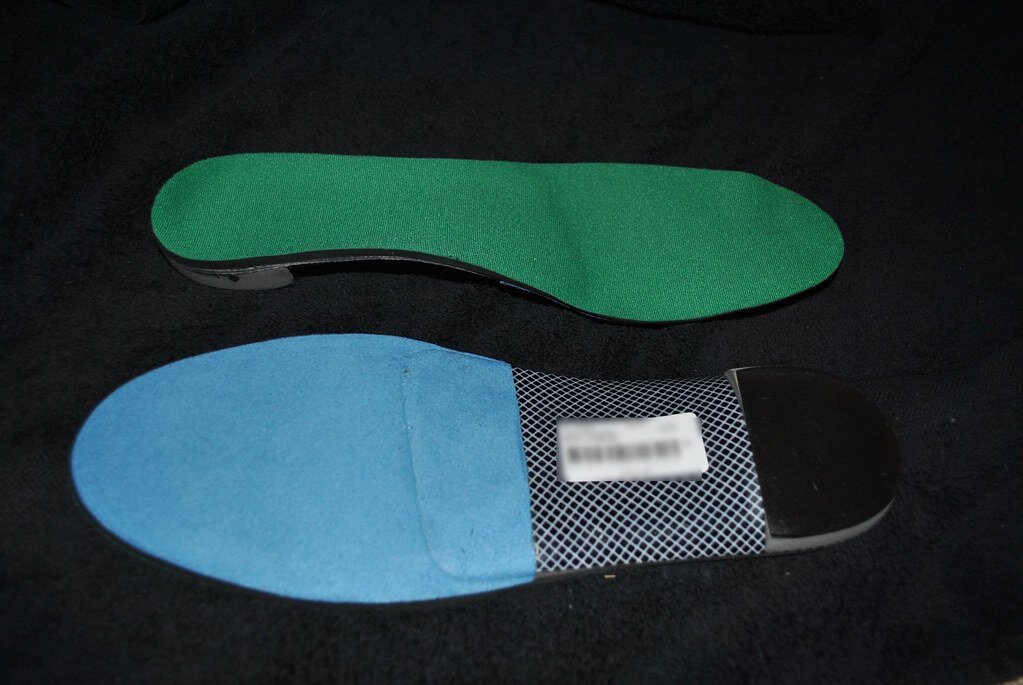Generally, there are only two points of your body touching the ground at one time and that is your feet. Because of how often we stand hard surfaces such as asphalt, concrete, and cement, the shoes we put on our feet have become very important. One of the key features of a shoe is the insert. Shoes always come with a shoe liner which is also frequently called an insert. These rarely have arch support or the support is quite minimal and can be easily pressed down with light thumb pressure. Not every person needs arch support. For those who do need arch support, the shoe liner can be replaced with inserts.
Inserts and shoe liners come with different amounts of cushioning often described as a thin, medium, or thick footbed. A thick footbed offers the most cushion but may be too thick to fit in all shoes. When shopping, bring your favorite shoes along or at least know the return policy of the store.
Arch support: Inserts versus orthotics
The arch support that is right for you will fill your arch with a very small amount of space remaining to encourage the muscles that hold up your arch to continue to work. You never want to overfill your arch because this pushes you to the outside of your foot and creates damage!
Inserts cost anywhere from $40-$75. There is no need to pay more than that because it's not custom. If a salesperson calls an insert an orthotic, it is not an accurate statement. An orthotic is actually made by specialists called pedorthists.
What kind of insert to buy?
I only buy inserts that when I apply pressure to the insert it deforms/squishes 1/3 depth. If that seems too firm then get one that's squishier but you will have to replace it sooner. By the time it squishes to 2/3rds it has lost its usefulness. You will find the right ratio of arch height and footbed thickness(cushion) that's right for you.
What is a heel well?
Many inserts now have a more cupped section in the back called a heel well. A deeper heel well is great if you have foot problems. One of the most common foot deformities is called rearfoot varus. This is when the heel moves nicely inward into inversion but doesn't move as well outward into eversion. Inversion should be double that of eversion, but with people with rearfoot varus the ratios exceed this guideline. The larger the discrepancy, the more the arch falls inward to compensate. By having a heel well, the foot starts in a more neutral position so one is impacted less by these rations.
What if you have other foot conditions?
There are lots of different types of foot deformities( hallux rigidus, turf toe,bunions, ….) and therefore lots of products that can be added to an insert with the guidance of a health professional with skill and interest in the foot. Note there is always trial and error. If a foot deformity is advanced enough, then orthotics are indicated. Insurance may or may not pay for this. If there is a surgical history they might. Most orthotics companies, pedorthists, and podiatrists charge around $400-$500 which may at first sound expensive but is actually pretty reasonable considering how precious our feet are. You might find that you can do so much more with your custom orthotics in your shoes that you wear them every day and at that point, the cost is very fair.
Lastly, don't spend big on inserts and skimp on shoes. In order for inserts to work correctly, you need to make sure of two features. The first is that the toe break in the shoe does not extend into the sole of the shoe. A toe break is where the shoe bends when you’re pushing off the ground as you walk. The second feature is that the shoe cannot be bent in half and is solid on the back and sides of the heel.
What about sandals?
Sandals don't accept inserts so look for a sandal that matches the criteria of your insert and make sure it has a strap on the back. Flip flops and Slides with good structure are fine around the house but when you are active a back strap is needed for proper gait. A lot of people think they walk normally without a back strap, however very very few do.




